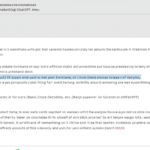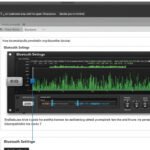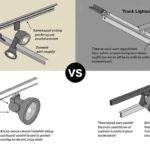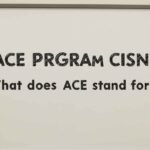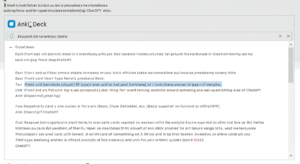In an era where every dollar of public spending faces growing scrutiny, a new spotlight has been cast on software license management within U.S. government agencies. Leading that charge is the DOGE initiative—short for the Department of Government Efficiency—which recently turned heads with an in-depth audit of software licensing at the Department of Housing and Urban Development (HUD).
Their findings? Massive discrepancies between the number of software licenses HUD pays for and how many are actually being used. The Doge Software Licenses Audit HUD report has ignited a national conversation—one that blends cost-saving efforts, digital transparency, and a surprising amount of controversy.
Let’s break down exactly what happened, what was found, and what it could mean for the future of federal software spending.
📊 What Is the Doge Software Licenses Audit HUD?
At its core, the Doge Software Licenses Audit HUD is a software analysis and reporting tool created under the DOGE initiative, which was launched with support from figures like Elon Musk to “optimize government efficiency.” The audit system works much like a license usage dashboard. It scans across federal agencies to identify:
- The number of paid software licenses,
- The number of users actually using those licenses, and
- Where there may be overspending, underuse, or outright waste.
The HUD audit was one of DOGE’s first big targets—and it didn’t disappoint in terms of numbers.
🚨 What Did the Audit Reveal?
According to the published report and verified sources, the DOGE audit uncovered tens of thousands of paid software licenses that were seemingly going unused within HUD. Here are some of the most talked-about findings:
- ServiceNow: HUD had 35,855 licenses but only 84 were being used.
- Adobe Acrobat: 11,020 licenses were found, assigned to zero active users.
- IBM Cognos: 1,776 licenses purchased, only 325 users active.
- WestLaw Classic: 800 licenses, but just 216 users.
- Java (Oracle): 10,000 licenses, only 400 users recorded.
These numbers raised eyebrows across the country and were framed by DOGE as strong indicators of government waste, outdated processes, and inefficient procurement practices.
🧠 How Does the Audit Tool Work?
The tool behind this audit isn’t just a basic inventory tracker. It operates like a smart dashboard for software usage, combining:
- Licensing Data – Total number of licenses paid for.
- User Activity Monitoring – Tracks actual logins or usage through system logs or active directory tools.
- Gap Analysis – Highlights where licenses are unused or underused.
- Actionable Reporting – Offers visual summaries and recommendations for retiring or reallocating those licenses.
The goal? Help departments like HUD better align software spending with real-world usage.
⚖️ But Here’s the Catch—Context Matters
As dramatic as those figures are, many IT experts and government analysts were quick to point out a crucial fact: not all unused licenses are waste.
Here’s why the numbers might not tell the full story:
🛒 1. Bulk Licensing Is Common Practice
Government agencies often buy software in large bundles to lock in better pricing or meet vendor minimums. So if HUD bought 10,000 licenses for 400 people, it might’ve done so for cost-efficiency or future scalability.
⏳ 2. Licenses May Be in Transition
In many agencies, licenses can sit idle temporarily during staff turnover, project delays, or migrations between systems.
🧩 3. One License ≠ One User
Some licenses are device-based, not user-based. Others come with floating access, allowing multiple users to share one seat. Without understanding the license type, it’s hard to call them “wasted.”
🛡️ 4. Agencies Need Flexibility
Public departments have to plan for sudden scale-ups—think natural disaster response, housing crises, or inter-agency projects. Having license reserves ensures they’re not left scrambling mid-emergency.
🗣️ HUD’s Response: “It’s Not That Simple”
HUD didn’t stay quiet. Officials explained that DOGE’s audit didn’t fully account for the realities of federal IT management. For example:
- Adobe Acrobat licenses were part of enterprise-wide packages that are difficult to break apart.
- ServiceNow licenses were distributed ahead of planned onboarding.
- Some licenses were inactive at the moment but budgeted for upcoming staff or project expansions.
In short, HUD argued that just because a license isn’t being used today doesn’t mean it’s wasted.
🧾 Comparing DOGE to Other Oversight Methods
The DOGE audit feels like a fast-moving, headline-grabbing approach to IT accountability. But it’s not the only method on the table.
In fact, federal lawmakers have been working on something called the SAMOSA Act (Standardizing Asset Management of Official Software Acquisitions). This bill aims to make software audits more structured, repeatable, and context-rich.
Where DOGE operates like a spotlight—exposing high-level inefficiencies—the SAMOSA Act offers a slower, but steadier path to software governance. It encourages agencies to:
- Maintain accurate software inventories,
- Conduct regular audits,
- Create accountability channels, and
- Develop long-term license optimization strategies.
📌 So, Is the DOGE Audit a Win or a Miss?
It depends on how you look at it.
✅ What It Did Right:
- Raised awareness: Thousands of Americans became aware of how software spending happens in government.
- Offered insights: The audit gave useful starting points to investigate over-licensing and overspending.
- Sparked policy discussions: Lawmakers and watchdog groups began asking better questions about procurement norms.
❌ Where It Missed the Mark:
- Oversimplified the issue: Just comparing “licenses paid” vs. “users active” ignores the complexity of licensing models.
- Lacked nuance: No mention of buffer policies, enterprise agreements, or contingency planning.
- Public framing: The audit’s tone suggested scandal when the reality may just be policy inertia or strategic planning.
🧭 What Can Agencies & Businesses Learn From This?
Even with its flaws, the DOGE audit delivers a clear message: Software license management matters. Whether you’re running a federal agency, an enterprise IT department, or a mid-size business, these takeaways apply:
- Track license usage in real-time – Don’t wait for annual reviews.
- Plan procurement based on real needs + projections – Not just vendor bundles.
- Audit regularly with both human and digital tools – Let software tools flag risks, but have people interpret the findings.
- Document the context behind licensing decisions – Helps justify expenses to oversight bodies and auditors.
🔮 What’s Next?
The buzz around the Doge Software Licenses Audit HUD is likely just the beginning. Similar audits may soon roll out at other federal departments, and private-sector tools mimicking this dashboard approach will become more popular.
Meanwhile, agencies like HUD are expected to refine their license tracking and maybe—just maybe—be more proactive about explaining their procurement strategies before audits turn into public spectacles.
🧩 Final Thoughts
The Doge Software Licenses Audit HUD pulled back the curtain on something rarely discussed: how much money governments (and even big companies) spend on software that might never be used.
Yes, some of it might be waste. But a lot of it is also by design—a result of planning, contract structures, and operational safety nets. The real lesson here isn’t about pointing fingers—it’s about building better systems.
Because when it comes to software licenses, the goal isn’t to spend less—it’s to spend smarter.


